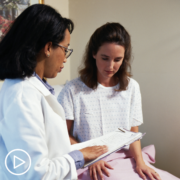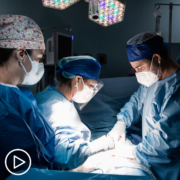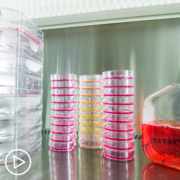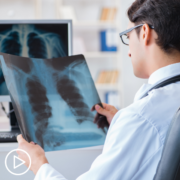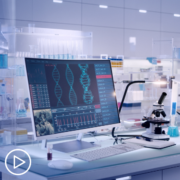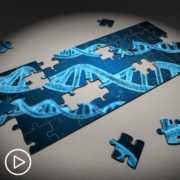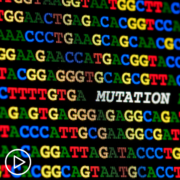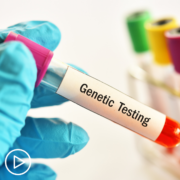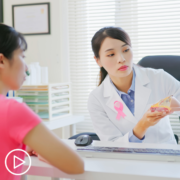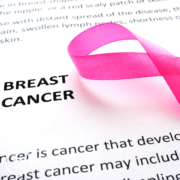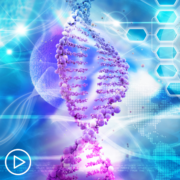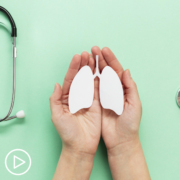Thriving With Breast Cancer | Tools for Navigating Care and Treatment from Patient Empowerment Network on Vimeo.
How can patients live well with breast cancer? Dr. Bhuvaneswari Ramaswamy reviews current and emerging breast cancer treatments, discusses the importance of emotional support, and shares advice and resources for engaging in care decisions.
Dr. Bhuvaneswari Ramaswamy is the Section Chief of Breast Medical Oncology and the Director of the Medical Oncology Fellowship Program in Breast Cancer at The Ohio State College of Medicine. Learn more about Dr. Ramaswamy.
See More from Thrive Breast Cancer
Download Resource Guide
Related Resources:
Transcript:
Katherine:
Hello and welcome. I’m Katherine Banwell, your host for today’s program. Today’s webinar is part of our Thrive Series, and we’re going to discuss the tools to help you navigate breast cancer care. Before we meet our guest, let’s review a few important details. The reminder email you received about this program contains a link to a program resource guide. If you haven’t already, click that link to access information to follow along during the webinar. At the end of this program, you’ll receive a link to a survey.
Please take a moment to provide feedback about your experience today in order to help us plan future webinars. And finally, before we get into the discussion, please remember that this program is not a substitute for seeking medical advice. Please refer to your healthcare team about what might be best for you. Well, joining me today is Dr. Ramaswamy. Welcome. It’s so good to have you here. Would you mind introducing yourself?
Dr. Ramaswamy:
Oh, no, of course not. Thank you so much, Katherine. And well, I’m Dr. Ramaswamy. I’m a professor at the Ohio State University. I’ve been here for about 20 years as faculty. My focus of interest, what I see in the clinic is primarily breast cancer patients. And my research is also focused on breast cancer itself, both treatment as well as prevention. I do both. I have a lab, and so I work on that to understand some of the mechanisms and biology of drug resistance as well as prevention.
Why does like lack of breastfeeding or obesity, why does that increase the risk of breast cancer? I study that in the clinic. I am primarily interested in clinical research, so putting patients on clinical trials, both therapeutic and non-therapeutic, collecting tissues, collecting data to understand, again, biology that’s happening in the patients and what works and improving care and identifying new novel therapies. That’s what I do.
Katherine:
Excellent.
Well, thank you for taking the time out of your schedule to join us today.
Dr. Ramaswamy:
Anytime.
Katherine:
I’d like to start – we start all of our Thrive Series with the same question. In your experience, what does it mean to thrive with breast cancer?
Dr. Ramaswamy:
That’s a great question. I think it’s an important one because we always talk about surviving breast cancer, and that’s obviously the most important thing. We all want to survive, but we all also want more than that. We don’t want to just live, we want quality of life.
And I think one thing that to remember is as soon as the breast cancer diagnosis is done, it’s in part – it’s difficult to say that you can thrive immediately. So, your focus is on really getting through the treatments and making sure it’s all done. So, at that time, managing the toxicities and getting through the stresses of going through the treatments and surgery, radiation, et cetera takes over everything else. But as you finish that off you, you want to focus on what are the ways you can try to get back to the life that you had prior to breast cancer.
Now it’s difficult and it’s almost impossible to forget the big C word in your life. So, that’s going to hang and that’s going to kind of make anything you look at your perspective as slightly different. I mean, every pain could be worrisome because could it be a reference? Has the cancer spread? Or every bad news about another person could you, could transport that about yourself and then kind of worry about what could happen to you.
Every visit to the doctor, and particularly your oncologist, is going to bring back memories. So, there are certain things that you can’t take away, but time can heal those. But what we talk about thriving is that you looking at factors that is going to make you and your body healthy. That is going to be exercise, being engaged in whether your work or your family work and being joyful and seek what brings you joy, whether it’s friends, your work or your family.
And make sure you make time for that. And also eating right and diet is an important aspect of that. Not doing inflammatory diets such as highly fatty diets or meat-containing diet, but really kind of looking at your diet and your weight and your exercise. And trying to also discuss with your team about what are the symptoms you are having and how we can support you to mitigate those symptoms. And really having conversations and somebody you can confide with to both manage your physical aspects as well as the emotional aspects.
And really kind of thriving and becoming an advocate for yourself as well as for others who have breast cancer is what I would say is truly thriving with breast – with the diagnosis of breast cancer.
Katherine:
Yeah. And we are going to go into a more in-depth discussion later as the interview goes on, but thank you so much for your perspective. Let’s start with an essential piece that helps people thrive, understanding their breast cancer. First, what are the types of breast cancer?
Dr. Ramaswamy:
Yeah, and I think that’s extremely critical. Empowering you, the patient, with the knowledge of the type of breast cancers and what’s the outcomes and why they’re getting some treatments, and what to look for is probably one of the most important things to do. And part of it lies primarily with the providers to ensure that education empowerment. But part of it also lies on the part of the patient to make sure they ask the right questions and learn about their breast cancer.
So, the type of breast cancers you have that are hormone receptor-sensitive breast cancer, that means your tumor would be positive for estrogen and or progesterone receptors. And it depends on estrogen and or progesterone for its growth and wellbeing. And then there is a HER2-positive breast cancer, which means the HER2 protein is high in your tumors and that drives the cancer cells.
And so, it’s important to understand that subtype and why we have certain treatments to improve the outcomes. And then the last one is when all those three are not there, ER, PR, and HER2. So, hence the word triple-negative breast cancers. These are the large subtypes of breast cancers that are based on these biomarkers, which are proteins that drive the growth of breast, the cancer cells. There is of course different types of breast cancer based on histology that is invasive ductal cancer, that’s very most common. The less, slightly less common is the invasive lobular cancer, about 10 to 15 percent.
But then there are also very less than 3 percent called metaplastic breast cancers and other types of breast cancers that could also be histological different subtypes.
And it’s important for you to know what type of subtype of histological or how does it look under the microscope is important for you to know as well. So, these I would say are the most important understanding of our breast cancer subtypes, at least this much to definitely educate the patient and patient having the understanding of their cancer.
Katherine:
What biomarker testing is standard following a breast cancer diagnosis?
Dr. Ramaswamy:
So, the three biomarkers that we definitely test for at this point are the estrogen receptor for strong receptors and the HER2. And, of course, there’s also the grade that your pathologist would grade your tumor. And grade is different from stage. And that is looking at how quickly your cells are growing. And these are the basic understanding that you should have about your cancer at this point.
Katherine:
Dr. Ramasamy, how is breast cancer staged?
Dr. Ramaswamy:
The breast cancer is usually staged by using couple of things. One is clinical staging. So, when you come in with the initial you feel a lump and you get a mammogram. So, we will stage you by understanding the size of your tumor in your breast as well as whether we are able to palpate your lymph nodes. Second, we, you know, the imaging. What we feel as a size is usually a little bit overestimated when we look at the mammograms or the MRIs that you have. And then we’ll see whether in the – in those imagings whether your lymph nodes are looking abnormal. So, we use these initially to do clinical staging. But then when we go to surgery, that’s when we do the correct pathological staging because now, we know exactly your tumor size. Then they do what’s called a sentinel lymph node biopsy.
We don’t need to take all the lymph nodes to stage your nodal status anymore. We just use this methodology in the surgery, in this – during surgery to just pick out those nodes that is draining your tumor back. And whether they’re positive or not. In general, as long as you don’t have a very locally advanced cancer, we don’t need to do staging scans to stage you for breast cancer. But in case you are unlucky enough to have cancer spread in those, and we do scans and you have cancer either in your bone or liver or lung, then that is a higher staging, and that’s what’s called the stage IV cancer.
Katherine:
Okay. Another key component of thriving is finding a treatment that is right for your disease. What are the considerations that guide a treatment decision?
Dr. Ramaswamy:
Yeah, great question. So, what we just talked about, the two things that are very important for us to make a decision, and that’s where we have come far in the last 20, 25 years, is because we are not just taking the staging.
That is anatomical staging, meaning what’s the size of your tumor and the lymph node involvement. We use those. That is important for us because that obviously changes the risk. The higher the stage, the higher risk of recurrence. The higher the risk, we have to do more treatment to get a benefit, right? So, that’s one side. But what we have come to understand is biomarkers are very important. That is biology of your tumor.
So, the grade, how quickly it’s proliferating although it’s not a biomarker, but it tells us a lot. And then the three important biomarkers we talked about ER, PR, and HER2. Those all are important for us to make a decision. In addition to that, we do something called a genomic testing called Oncotype DX assay. There is also another test called MammaPrint. These are genomic testing.
That is, we look at some of the genes that are up or downregulated in your tumor to decide whether you are going to benefit for something called chemotherapy or maybe just targeted therapies enough. So, these are some of the factors that we use to make a decision.
Now, do we use age and your performance status? Meaning how well you are? Do you have comorbidities? Do you have bad diabetes? Do you have heart disease? Yes, they all go into that whole treatment decision, but the primary is made out of biomarkers and genomic testing and anatomic, and the rest are additional factors that go into our decision-making.
Katherine:
Yeah. What about metastatic disease? Are the considerations different when it comes to treatment?
Dr. Ramaswamy:
It is a little bit different because the first thing that we have to understand is when we are seeing them in stage I, stage II, stage III, which is stage IV is metastatic, stage II – we – our goal is a curator. We are trying to really throw the kitchen sink, although that’s really not what we do. We are trying to still be tailored therapy, but we are trying to do everything we can to prevent a recurrence.
But now when you have a stage IV disease that is the cancer has spread, that is the horses have left the barn in the breast and has gone and settled in distant organs and gone, our goal is to try to contain the disease. So, prevent further progression, prolong the life and survival, and also improve quality of life. So, there are those consideration.
The biomarkers still go into consideration. We ensure we biopsy the metastatic site and look for those biomarkers. We do the genomic testing, gene sequencing of this. That will also help with our decision-making. We, of course, look for clinical trials because new novel therapies are always more important, but these are the other factors. And, of course, performance status that is how well you are, how well your organs are functioning, and what’s your age, and how that affects your morbidity. All of those are also important.
Katherine:
What questions should patients ask about their treatment options?
Dr. Ramaswamy:
I think the most important thing is to understand what you have first. So, kind of the doctor will talk to you about what type, histological type of breast cancer you have. They’ll also talk to you about what biomarkers you have. And they will also talk to you about the treatment options, which could be chemotherapy versus target therapies, and what are the outcomes from those using clinical trials. So, I think the questions that you have to ask them is that, what do you feel like you would is right for your body, right? That’s important. That what you have some of the preconceived notions that we all carry. That bias and preconceived notions is just a normal natural way of learning. And so ask about those fears, ask about those hopes that you have. And if your hope is, “Hey, can I do as well without chemotherapy?” Ask that question. So, and it’s important to understand the side effects and the outcomes of each therapy.
It may also be important for you if you do – you really don’t want to have treatments to understand if you don’t get treatment, what are your outcome changes? So, those are, I think, the important thing. And then what that does mean to you? What do you want out of your life? Longevity, quality of life? How long will your quality of life be affected? And how does that impact your understanding of what you want out of your life? I think those are important for you to ask and make sure you have a friend or a relative with you so that not everything is going to go in at the first or the second visit, so you have someone else who’s taking notes.
Katherine:
Yeah, good idea. Are there emerging therapies that are showing promise?
Dr. Ramaswamy:
Oh, my God. There’s just tremendous emerging therapies that are showing extraordinary progress. And I talk about this to my patients all the time. I mean, I tell them like two years ago say in a patient with – patient with metastatic disease, I’ll say, last year this drug wasn’t approved.
This drug is now approved for you to be given, and it shows extraordinary effect. So, every year we have new drugs getting approved, and we are also trying to get it used to be a little bit of a richness on the HER2-positive disease. And now we are seeing definitely a lot of richness on hormone receptor- positive disease. And I think we’re starting to see some new particular immunotherapy and other targeted therapies showing some response in triple- negative breast cancer.
Now, I know that’s a place that we still need to see more newer therapies, but overall, in the stage IV setting, we have really many options to keep them in good quality of life and longer. But people will ask, “Really, why do I even need to get to stage IV?” Really look at me and improve the curative setting. And that again, we are able to pick the higher risk patients, what me – what it means to have higher risk disease, how do we target them, newer drugs to target them. So, I think in so many ways we are doing better. And we are also getting to a place can we detect higher-risk patients, not just by their initial diagnosis and response, but follow them sequentially by circulating tumor cells?
And we are getting to that place where we can actually do circulating tumor DNA, so just isolate the DNA, and we know what will belong to the tumor. And then circulating tumor cells seemingly even after your curative therapy. And so that is something that’s getting approved. And so we are not only seeing treatment, but we are also trying to see better detection of that reference. So, I think we are in so many ways, improving. And I am – I’ve been in this for 20 years, some of the things that thought was a dream is coming true. So, truly just keep living well and keep thriving. There are options.
Katherine:
Yeah. That’s, it’s positive.
Dr. Ramaswamy:
Yes.
Katherine:
Dr. Ramaswamy, along with treatment can also come side effects. What are some common side effects of breast cancer treatment?
Dr. Ramaswamy:
Yeah, great question. Again, an important question for you all to consider. So, let’s divide our treatment to targeted therapy and chemotherapy. The targeted therapy could be the estrogen receptors and then the HER2 because the HER2, again, remember that biomarker. And then the chemotherapy that any patient with breast cancer could get, including, of course, the triple-negative. And then we’ll touch base a little bit later on with the immunotherapy. So, when we look at the targeted therapy with estrogen receptor, anti-estrogen receptors, of course, it’s like putting you into menopause again. It’s like so you could have hot flashes, you could have some emotional liability and you could have vaginal dryness and sexual libido could be lower.
And also you could have joint aches and pains and your bone density could go down and cause osteopenia and osteoporosis and fractures. So, those are some of the – and we can address all of those that we’ll come to later. With the HER2-targeted therapies, one of the main things will be the heart. These can affect the heart because there are some receptors that are present there that these HER2 therapies can affect the myocardial function. So, they don’t cause increase in heart attacks, but just the pumping action of your heart could go down. We keep checking your heart function to help with that. And then with the chemotherapies, other than your blood counts going down, these are acute events. Those blood counts could go down, which could put you at higher risk for infections. Again, some of the heart chemotherapies can affect the heart. So, we’ll keep an eye on that.
And, of course, fatigue that comes with all of these treatments that can happen. But some of those chronic things that can happen is also neuropathy. So, tingling, numbness in your hands and feet, even sometimes pain in your hands and feet. And then this can stay on for a little bit longer and can cause some trouble buttoning your shirt or playing the piano or putting your earrings. So, it can affect your daily quality of life and cause pain. The other important thing, which we do have now an option is also hair loss. I know that is something hard for age. It’s so hard for women to lose hair and the consequence of being identified differently and not having that – when you look at the mirror, it’s a constant reminder.
So, we do have something called a scalp cooling that you could take an option and discuss with your doctors whether that how helpful that’ll be for your type of chemotherapy and whether you could use it and you can – but 60 percent of the time not lose all your hair and need a wig. So, that is something that you can address. So, broadly, these are the issues that can happen. Again, this is very broad. Depending on your treatment, you still need to talk to your doctors.
Katherine:
How can some of these side effects be managed?
Dr. Ramaswamy:
So, the key thing is to be first thing that I want to advise all our patients is that be vocal about your side effects. Okay? Sometimes we all think, okay, they did tell me I’m supposed to have all the side effects. I just need to keep quiet about it. That’s not what is important. And I think I did miss mentioning the GI tract changes like nausea, vomiting, or diarrhea. Again you think, oh, this is our part of all chemotherapy, I just need to keep quiet. No, that’s not the case because we actually give you anti-nausea medications before the chemotherapy. So, if it’s not effective, you need to have to tell your doctors, “Okay, this time I had a couple of sensations of nausea, but no vomiting.”
Or “No, I was vomiting a lot.” Whatever it is. Even if you had just nausea, it’s important to tell your doctors. If it’s diarrhea, you need to tell them. We do give you some medications, but if it’s not working, you need to tell them. And again, we always underplay the issues with sexual side effects because you don’t want to talk about that. I mean, it’s not important. No, it is important.
It’s important for your intimacy, it’s important for your life, and it’s important for you to speak because there are supportive care therapies that we can provide. Neuropathy, again, I think your doctors will always ask you, but being vocal about it, being honest about it, and talking about it is important. So, again, fatigue.
They are going talk to you about exercise, because exercise does overcome that fatigue. But if you’re not able to do it again, it’s honest to say, “No, but I didn’t do what you said last time.” So don’t feel bad about it. And there could be other ways we can improve your fatigue too. So, again, sharing those side effects is important and we can. We can address all of these side effects. Now, I’m not saying the minute we address these side effects it’s all going to go away completely, but they can get better. And it’s important for you to talk about it and get those supportive care measures.
Katherine:
Yeah, thank you for that. It’s really helpful. And it actually leads us into the next topic. Coping with emotions that come along with a breast cancer diagnosis such as anxiety and depression can be challenging. Why is it important to share emotional concerns with your healthcare team?
Dr. Ramaswamy:
Yeah, so I think one of the things that the breast cancer patients, I mean, I would say all cancer patients, I’ll be honest, or any kind of chronic illness, fearful illness. And I think most what they – I think what hurts them most is the how isolating the journey is because despite having very close family and they might have full trust in their providers. At the end of the day, those fears, those sorrow of potential mortality and all the side effects has to be gone through them. They’ve got to go through that. And then validating their anxiety, validating their fears, validating their symptoms is so important. So, that’s why telling your patient I understand. Whatever it is, you’re going through an isolating journey, it’s hard, and I validate all your concerns that you have.
We can’t really compare apples to apples here like patient to patient because you – we all have an inherent approach to a critical problem. And this is a critical problem that comes into your life and whatever that approach is of what – how you’re going to approach this. So, there’s no right or wrong and how she copes and you cope. And sometimes family does that and sometimes your own friends do that. Like, oh, it’s okay, but see she did well and she and you know and see how she’s coping. It doesn’t help. I think so educating the family as well to say or the spouse particularly validate their concerns, give validation and acknowledge their concerns and then say something positive to help them move forward. And I think these are important. And I think what I tell my patients is that I will never know what you’re going through if you don’t share it with me.
And this would be both emotional and your physical and okay, I can pick some of it with your in a body language, but I can’t really pick the depth of the problems and we can address how to find solutions. The third point that’s important is there are solutions for this. It’s not like they’re going to get better completely, but we can help you. We can help you whether it’s emotional anxiety symptoms, we can find peer group that could help. We can find psychosocial counseling that can help. We can also help with actual treatment and medications that helps with depression and anxiety that we can manage better. And we can help you with your sleep because sleep is so important. And when you’re sleeping is when you start worrying about many things.
And the same way with all your other physical side effects, there are some things that we can do. We are never going to say, “Well, put up with this. You just have to go through this to get better.” We never say that. We will try to address it in some way. Now, I do understand the limitations of what we can do and it doesn’t always get better to everybody, but if you don’t tell us, we can’t even try.
So, it’s so important to share and sometimes sharing all this reduces the burden on you. So, and I think that’s important as well, so.
Katherine:
Dr. Ramaswamy, before we move on to answering questions from our breast cancer community, I’d like to touch upon the concept of shared decision- making. In your mind, what does that mean?
Dr. Ramaswamy:
So, it is a concept that has come more lately in our lives. Even as I started, we didn’t – not that we didn’t do it, we didn’t give it a name. And I think now giving it a name always helps because we always think about it and make sure we are doing it. I think the shared decision-making is important on two levels. Sometimes we do have treatment options that are very similar as far as outcomes, so.
It is important to understand what are the goals of the patient. Is it that even if it’s a 0.5 percent increasing their cure rate, is that their goal? Or really looking at the benefits versus the risks and versus side effects and trying to reduce the side effects and quality of life. So, I think this – those kinds of things, this will never be addressed if you don’t understand our patient and give them an opportunity to speak out what they want.
So, I think in – and this happens in every aspect of their journey, right? So, it is important even if they say sometimes they’ll talk about sexual side effects and we talk about it and we offer some clinics. And they might say, you know what? At this point, I think I know you’ve shared with me certain ways. Let me try it and then I’ll tell you when. So, everything is the shared decision-making because that’s when we have the highest sense of compliance and to feel a sense of feeling that they’re being heard, and we are in this together. And if we are not in this together, it is almost impossible to get the best outcomes both from quality of life and also survival. So –
Katherine:
Yeah.
Dr. Ramaswamy:
– that’s where the shared decision-making comes to. So, understanding the patient better and the patient understanding their outcomes better.
Katherine:
Yeah. Well, let’s get to a few audience questions that we received before the program. Rebecca writes, “I have skin itching as a side effect of my treatment. Is there anything that could be done to help?”
Dr. Ramaswamy:
So, it depends on what she’s on and I’m going to assume maybe possibly like trastuzumab (Herceptin), pertuzumab (Perjeta) which are anti-HER2 therapies. They are – they can cause skin itching because they also get it for a year. So, I think the most important thing is of course discussing with your provider because is it one of these drugs that you’re on? Sometimes if it doesn’t get better with some of the – first things that we do is make sure you don’t have dry skin, that you’re ensuring that you’re putting a lot of moisturizers and addressing those. Where is your skin itching? Is there a rash associated with it.
And so we kind of look at all of that and we can also give you some anti-itch medications if your itching is more at night when we all go to sleep. So, we can do that. And if it’s still there, then your provider can look at the pros and cons of is this drug causing it and is it worth pursuing it despite your itching, or taking it off so that it can improve quality of life. So, I think the most important thing is to make sure you talk to your doctor. And then they look at all of the others, the extent of their itching, the timing of their itching, and is there a rash, and then see whether the drug is causing and decide about holding or not holding the drug.
Katherine:
Okay. Good advice. Susan wants to know, have there been any advances in imaging or screening for a recurrence? And can anything be done to help prevent a recurrence?
Dr. Ramaswamy:
So, let me answer the first question. So, we did – we have done clinical trials where patients got imaging that meaning CT scans even if they don’t have symptoms every four months, as opposed to the other group had only scans when they got symptoms. And we looked at two outcomes. One is, are they surviving longer? Because that is, of course, our primary goal. But actually, the secondary goal was, is their quality of life better?
Katherine:
No.
Dr. Ramaswamy:
Many of us knew that survival is not going to improve because we understand this disease. So, you did not. The two groups do not have any difference in survival, but we were very surprised to see even the quality of life was not improved. That’s because every time you have a scan, there’s a lot of anxiety what you’re going to say. And then if there is some somewhere that could be nothing at all, now they say, I’m not sure whether it’s inflammatory or metastatic. Now you have to go and biopsy. Now the biopsy can lead to some side, I mean, some complications, or sometimes we’ll say, no, we can’t biopsy it. We’re going to watch it closely.
Now it’s easy for me to say, and then I’ll walk out and go and see the next patient. But you are going to carry this heavy burden in your mind and think about, oh, my God, four months I’m going to wait. What if it’s grown? So, there’s a lot of anxiety that induces that we are not able to address. So, that’s why we don’t do routine imaging for all patients. But we have a very low threshold to do the imaging if you have symptoms that we are concerned about.
And I generally educate my patients any persistent progressive symptoms. So, two-piece persistent progressive symptom. Please call, don’t even wait for the next appointment, and then we’ll move forward from that. So, as far as imaging, I can’t say that we have a better tool to identify those little mats and do something better. But like I had said before in this particular meeting, we are now looking to see whether we can find that circulating tumor cells or circulating in tumor DNA.
And if that proves out to be good, we have some late FDA approval of a test. But if it is going to impact patients’ lives by doing this on a routine basis and we think we can start the treatment earlier and impact their outcomes, you are going to have another test that we can do, which is even simpler, which is just a blood draw test.
So, I think we are going in that direction and we’ll know a little bit more soon. Now, your second question was, can we prevent a recurrence? So, everything that we are doing is to prevent a recurrence, right? Because if you think about it, your tumor is going to be removed by surgery, and so it’s out. And we are going to do additional radiation, which to just kind of pick those little cells if they’re left. And in certain circumstances, I would say in most circumstances we would do radiation. But we are also doing all these treatments that we talked about, chemotherapy, antiestrogen therapy. We are doing it longer. We are doing anti-HER2 therapy. We’re trying to pick those high-risk patients who didn’t respond so well. We are giving them more treatments to treat. They’re all to prevent a recurrence.
That’s what we are doing. But the – I’m – we did talk about two other things as well. Exercising, eating right, making sure you’re not gaining weight, and making sure you’re engaged because your reduced stress and lack of – increased happiness improves good cells in your body, less inflammation in your body, all of this will help. Okay? And no doubt all of this to is to help your – reduce your recurrence. But the thing is what we are not able to say to a patient is that, okay, we’ve done all this, 100 percent you’re not going to have a recurrence. We don’t have that level of confidence in what we do. We can say you reduced your risk of recurrence, but we can’t just say you have zero chance of recurrence. That’s where we still can improve and we’ll continue to do better, so.
Katherine:
Thank you for those responses, Dr. Ramaswamy, and please continue to send in your questions to powerful to question@powerfulpatients.org, and we’ll work to get them answered on future programs.
Well, to close out our conversation, Dr. Ramaswamy, I’d like to get your thoughts on where we stand with research progress. Are you hopeful?
Dr. Ramaswamy:
Extraordinarily hopeful. I mean, and I say this like I even said before, some of the things I was skeptical about. I have to pull back my skepticism, which I’m very, very happy about. The role of immunotherapy starting to come into breast cancer, newer drugs, oh my god, therapeutics has improved our understanding of how to prevent these cancers. Picking up those high-risk patients, looking at these liquid biopsies, our understanding of genomics and precision oncology, I just have so much hopes. Management of brain mats with radiation treatments that are so targeted, improving, reducing, or mitigating the side effects with the treat – with the less treatments for those patients who have less risk. I mean, in every possible way, we are improving the way – what we are doing. Can we do better? Particularly in some areas I do want to bring it out. I think we still lag behind in health equity.
I think still a in African American patients with the breast cancer has a higher risk of dying from breast cancer. We haven’t really impacted it as well as we can do. I think understanding the ancestry, understanding the risk, understanding the lifestyle behaviors that increases the risk of these aggressive cancers, say in African American women and in –and those are very, very important. Prevention is so much better than cure, right? So, I think a little bit better of our understanding on prevention and the liquidity. Both access and understanding the biology and treatment. Improving our clinical trial approvals. We still only even in the best cancer centers, we only approve 25 percent of our patients, 15 to 25 percent of our patients into cancer clinical trials. And look at the changes we’ve had.
But imagine if we can put 50 percent of our patients on clinical trials, we’ll double the progress because without those clinical trials, none of these drugs can be approved.
Katherine:
Yeah.
Dr. Ramaswamy:
So, what is today in a clinical trial is what is a tomorrow-approved drug. So, our understanding and talking about that becomes very, very important for us. And then I think lastly, there are some breast cancer like invasive lobular cancers that are only 15 percent that we still don’t understand as well. And so there are some more little pockets that I think we still need to understand. Male breast cancers are slightly starting to increase. We need to improve. So, there are areas we can do better, but overall, it’s absolute promising and very, very happy today. Our research is going really well, so, and it’s impacting patients’ outcomes.
Katherine:
Dr. Ramaswamy, thank you so much for taking the time to join us today.
Dr. Ramaswamy:
Thank you so much for taking this to the patients. I appreciate you. So, thank you.
Katherine:
And thank you to all of our partners. If you’d like to watch this webinar again, there will be a replay available soon. You’ll receive an email when it’s ready. And don’t forget to take the survey immediately following this webinar. It will help us as we plan future programs. To learn more about breast cancer and to access tools to help you become a proactive patient, visit powerfulpatients.org. I’m Katherine Banwell, thanks for being with us today.
